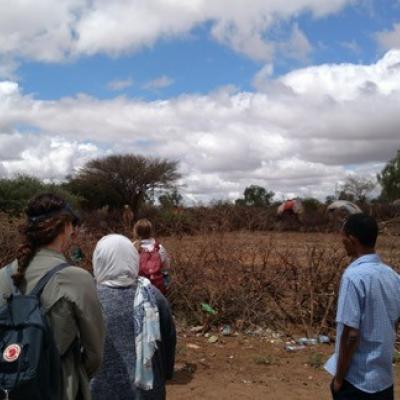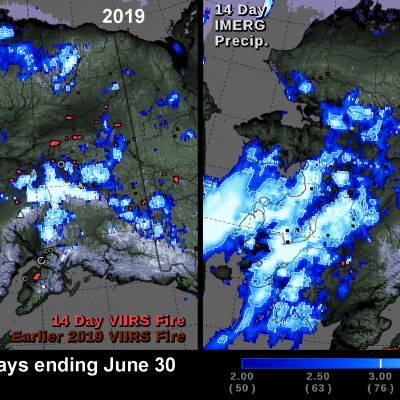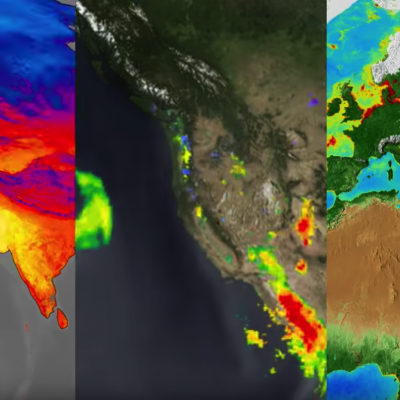NASA's multi-satellite precipitation algorithm, known as IMERG, is a tool that can help us understand recent fluctuations in Alaska's wildfires. In the summer of 2020, wildfires burned fewer acres in Alaska than in any other year during the past 10 years. In contrast, wildfires burned a record number of acres in Alaska in the summer of 2019. The image below shows the locations of satellite-detected fires and precipitation during the last two weeks of June for both years. The above image shows IMERG rainfall totals overlaid with fire hot spot detections from the Visible Infrared Imaging





